Chaga – Russia's Priceless Natural Treasure
"He could think of no greater pleasure than to go off into the woods for months on end, to break off this chaga, crumble it, boil it over a campfire, drink it and feel as good as an animal. Walking through the forest for months, knowing no other care than to get better! Like a dog in search of a mysterious grass that will save him."
Unlocking the Power of Wild-Grown, Freeze-Dried Chaga Extract
Imagine vast, untouched birch forests stretching endlessly across the Russian landscape—where silvery-white trunks stand tall, their vibrant green leaves whispering in the wind. These pristine forests are home to one of nature’s most powerful health-promoting secrets: Chaga Mushroom (Inonotus obliquus).
For centuries, wild-harvested chaga has been revered in traditional Russian and Eastern medicine as a potent natural remedy. Today, it is gaining worldwide recognition, particularly in China, Japan, Korea, Europe, and the United States, for its remarkable health benefits and superior antioxidant properties.
At BaikalHerbs, we specialize in producing high-quality, freeze-dried chaga extract, crafted exclusively from wild-grown chaga harvested in the cold, remote forests of Russia. Our mission is to deliver the purest and most potent form of this incredible superfood to health-conscious consumers and businesses worldwide.
The Enigmatic Chaga Mushroom: A Gift from Nature
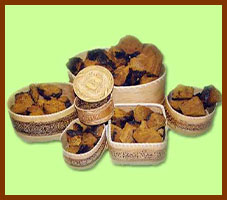
Chaga in Birch Basket
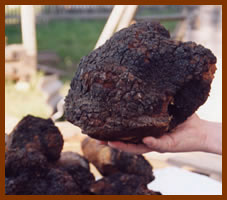
Chaga on Hand
Unlike conventional mushrooms that grow on the forest floor, chaga forms deep within the heart of living birch trees, slowly absorbing their nutrients over many years. This unique parasitic relationship results in a dense, black, cracked formation on the tree’s exterior—often resembling burnt charcoal—while inside, it contains a rich golden-brown core packed with bioactive compounds.
These images provide a clear visual representation of the Chaga mushroom's growth and development within a birch tree trunk.
Revered as the "King of Medicinal Mushrooms," chaga is a powerhouse of natural wellness, containing:
- Beta-glucans – Strengthen immune function and promote overall well-being.
- Triterpenes (including betulin and betulinic acid) – Exhibit powerful anti-inflammatory and potential anti-cancer properties.
- Antioxidants – Protect against oxidative stress and premature aging.
- Melanin – Supports skin health and acts as a natural UV shield.
- Polysaccharides – Aid digestion and provide sustained energy.
- The Unique Chromogenic Complex – A group of humic-like acids found only in wild chaga.
Wild vs. Cultivated Chaga – What’s the Difference?
Cultivated chaga, grown on artificial substrates, lacks betulinic acid and the chromogenic complex, resulting in inferior potency and reduced health benefits.
Wild chaga, harvested from mature birch trees (Betula pendula and Betula pubescens), is naturally enriched with antioxidants, triterpenes, and immune-modulating compounds.
The pictures below may help you distinguish between wild and cultivated chaga mushrooms. The wild chaga mushroom consists of three parts: the outer black layer called the sclerotium, the second part known as the fruiting body, and the third part, which is porous and soft.
More than 80% of the biologically active substances in the chaga mushroom are concentrated in the sclerotium and the fruiting body. Artificially grown chaga lacks a fruiting body and has an extremely thin sclerotium layer. However, most manufacturers use the entire body of the mushroom to reduce costs and increase profit. We take a different approach, using only the two layers of chaga that are richest in beneficial substances.
For maximum effectiveness, our chaga is ethically wild-harvested, ensuring that each batch is sourced sustainably while maintaining the delicate balance of nature.
Visual Comparison:
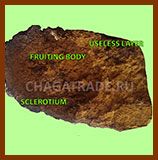
Chaga Layer Cross-Cut
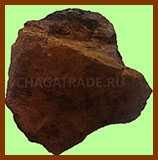
Processed Chaga Chunk
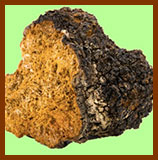
Artificially Grown Chaga
Raw Chaga vs. Chaga Extract: What's the Difference?
Not all chaga is equal. Chaga extract is significantly more potent than raw chaga (such as chaga tea), offering a higher concentration of bioactive compounds like beta-glucans, antioxidants, and triterpenes. Understanding this difference is key to maximizing the health benefits of chaga. Learn more in this article on raw chaga vs. chaga extract.
Whether you're an individual seeking powerful immune support, a health supplement brand, or a business looking for premium chaga extract, we provide bulk and wholesale options tailored to your needs.
Why Freeze-Dried Chaga Extract is the Best Choice
Many chaga extracts on the market undergo heat drying or spray drying, which significantly degrades their nutrient profile and effectiveness. At Baikal Herbs Ltd, we use an advanced freeze-drying process to preserve 100% of the bioactive compounds found in wild chaga.
Benefits of Freeze-Dried Chaga Extract:
- Preserves potency – Maintains the highest concentration of beta-glucans, antioxidants, and triterpenes.
- Enhances bioavailability – Ensures superior absorption and maximum effectiveness.
- Retains natural structure – Protects delicate nutrients that are easily destroyed by heat processing.
- Extends shelf life – Keeps chaga fresh, potent, and effective for longer.
Want to understand the science and process behind premium Chaga extract? Read our detailed article on Chaga extract quality here.
By choosing freeze-dried chaga extract, you receive a highly concentrated, nutrient-dense product that delivers the full power of nature in every serving.
Our Commitment to Quality and Purity
At Baikal Herbs Ltd, we take pride in delivering the purest and most potent chaga extract available. Every batch is:
- Sourced from remote Russian forests – Wild-harvested in Siberia and the Russian North, where chaga thrives in its most potent form.
- Freeze-Dried for Maximum Potency – Preserving the integrity of its nutrients without heat damage.
- 100% Natural & Free from Additives – No fillers, preservatives, or artificial ingredients.
